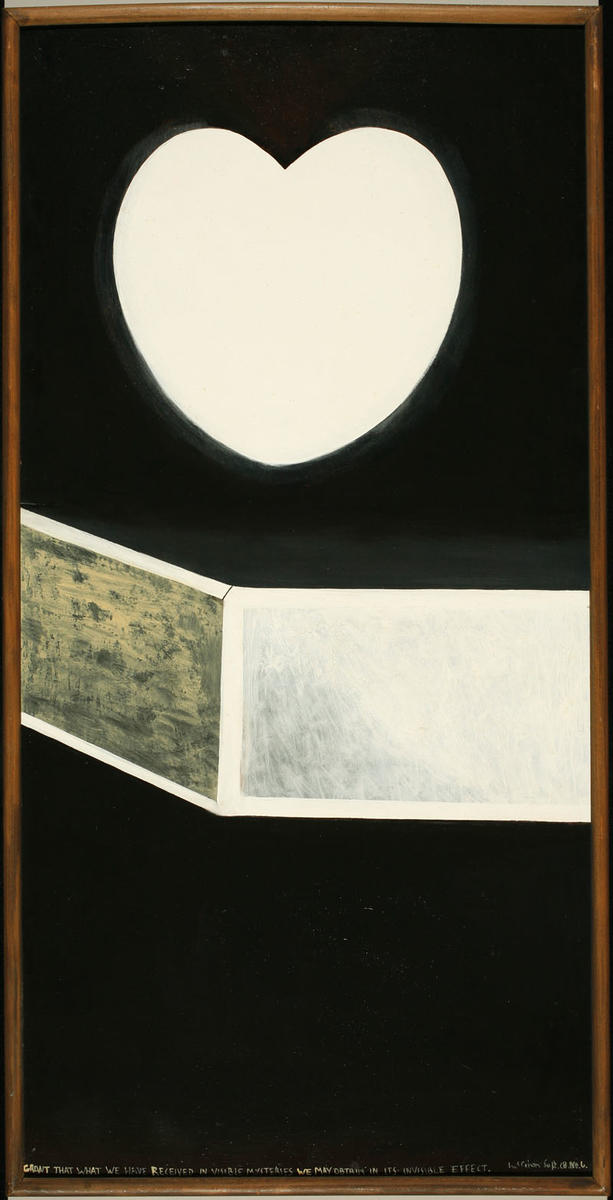Visible Mysteries VI
-
Colin McCahon
b.1919
d.1987

Title
Visible Mysteries VI
Details
| Production Date | 1968 |
|---|---|
| Collection(s) | Collection Govett-Brewster Art Gallery, New Plymouth. Purchased from Monica Brewster Bequest with the assistance of the Queen Elizabeth II Arts Council of New Zealand in 1972. |
| Accession Number | 72/27 |
| Media | Oil on board |
| Measurements | Sight size: 1205 x 592mm |
About
Colin McCahon saw himself as religious “in attitude”, and although he never became a member of any church, faith, in a broad sense, is a key idea in much of his work. The Visible Mysteries series was produced shortly after McCahon had been working on paintings commissioned for the chapel of the Sisters of Our Lady of the Missions in Remuera, Auckland, and in it McCahon continued to work through ideas he encountered while working on the chapel commissions. In Visible Mysteries VI McCahon used the iconography of the Catholic Church, the altar and the traditional heart shape, to refer to the Eucharist; the ritualised consecration of bread and wine as Christ’s body and blood.
In this painting, the objects represented are simplified and abstracted to the point where they become icons. They are laden with significance in the same way that the commonplace items of bread and wine take on meaning beyond themselves during the Eucharist. McCahon explores the “visible mysteries” inherent to faith. Mysteries are, by definition, outside our comprehension, but through metaphor and symbolism mysterious processes can be comprehended. The bread and wine, through the ritual of the Eucharist and the faith of believers, become the visible manifestations of Christ’s body.
As a formal arrangement, Visible Mysteries VI is uncompromising. Pared back to essential ingredients, the painting forces the viewer to read “between the lines” or take a leap of faith in understanding. The text inscribed on the painting, “Grant that what we have received in visible mysteries we may obtain in its invisible effect”, reinforces this reading by asking for faith that by being open to receiving the Eucharist, or visible mysteries, we may obtain spiritual redemption.


